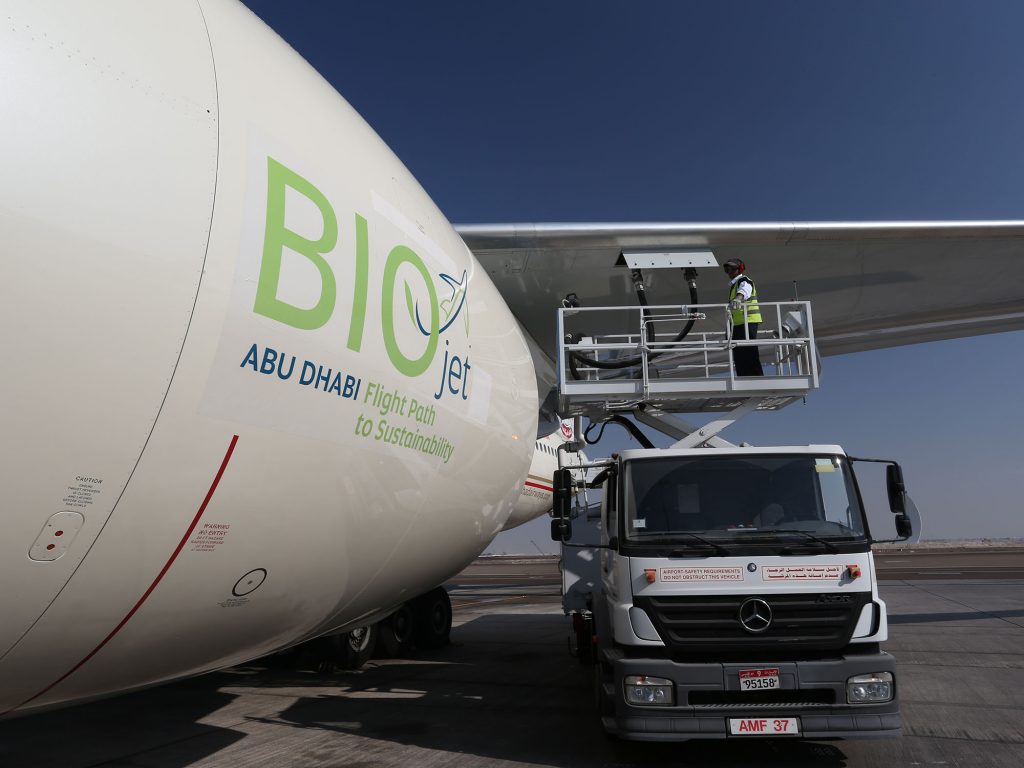There are many obstacles in the way of India’s ambitious goals for cleaner aviation fuel in 2022.

There are many obstacles in the way of India’s ambitious goals for cleaner aviation fuel in 2022.
According to Bloomberg, the central government developed a jet fuel in an effort to reduce the haze that hangs over India‘s major cities. Scientists work with partners, such as Boeing Co., to gain certification for their biofuels, which are generated from used cooking oil and the unutilized seed of species like Pongamia and jatropha, on a vast 300-acre tea plantation near Dehradun where leopard and deer can be seen.

According to the report, India is attempting to shake up the $155 1.2bn biofuels industry with the proposal operated by the Indian Institute of Oil, a lab of the Committee of Science & Industrial Research. Crop-based options like ethanol have long faced criticism that they can cause indirect emission levels by expanding farmland and raising food prices for the world’s poorest people.
To use its fuel, the institute has partnered with IndiGo, the largest airline in the nation. But there are other obstacles that its researchers must overcome. Scientists cannot generate the fuel on a broad scale to be economically feasible since it is more expensive to produce using the new method than regular jet fuel and more complex to obtain enough raw materials.
According to Salil Gupte, president of Boeing India, the infrastructure required to transport and maintain sustainable aviation fuel will require “substantial” expenditures.

The focus right now, according to Gupte, is more on demonstrating our ability to produce fuel locally, which is what I and we are working on. We’ll need to either adapt or build an equally accessible capability for sustainable energy over that network because it has taken decades to build out the infrastructure to make jet aircraft fuel available.
In addition to increasing scale, the Dehradun researchers are working to have the fuel approved by ASTM International, a company based in Pennsylvania that creates and disseminates international standards for goods and services.
According to Boeing, it is currently assisting with the certification procedure for the aviation test fuels from Dehradun by reviewing and supporting it. In the meantime, Airbus SE is researching the needs and difficulties associated with producing sustainable avgas in India, working with Groupe ADP, a Paris-based airport operator, among others, with creating a business case for doing so.
According to Anil Sinha, a senior scientific scientist at NASA, one benefit of the fuel over other substitutes now in the United States is that it wouldn’t have to be mixed with ordinary jet fuel. Nikita Pavlenko, team lead for fuels at the International Council on Clean Transport in Washington, said: “In the US, we’re still offering an option to food crops, and for that purpose, I think India and Europe are ahead of what the US is proposing.” India’s strategy is also more expensive and challenging to execute, according to Pavlenko.
The govt Mangalore Refinery & Petrochemicals Ltd., which has received the technology from the Center, intends to build a plant with a daily of 20,000 liters by 2024 to commercialize the homegrown fuel. However, despite SpiceJet Ltd. operating the first biofuel aircraft in India four years ago, jet fuel use hasn’t taken off.
Additionally, India lacks the supply networks required to obtain feedstock in remote locations. The institute’s director, Anjan Ray, believes India has the capacity to harvest 3.5 million tons of oilseeds yearly, but the country only collects fewer than 500,000 tons.

Much depends on a government push for domestic biofuel. According to a statement from IndiGo, which has pledged to mix 10% sustainable avgas by 2030, the government should provide tax breaks and subsidies to promote its use. To blend sustainable avgas, it was stated that India needed to establish transportation, store, and airport infrastructure.
India, the world’s third-largest producer of greenhouse emissions, has pledged to become net carbon neutral by 2070. Still, Prime Minister Narendra Modi’s administration is having challenges on several fronts. According to predictions from BloombergNEF, just 59.4% of a new cars in India will be fully electric by 2040, compared to 84.6% in China & 78.7% in the US. Due to state power wholesalers’ financial difficulties, India may fall short of its goal to reach 175 gigawatts of renewable energy capacity by the end of 2022.
Much depends on a government push for domestic biofuel. According to a statement from IndiGo, which has pledged to mix 10% green avgas by 2030, the government should provide tax breaks and subsidies to promote its use.

In order to blend sustainable avgas, it was stated that India needed to establish transportation, storage, and airport infrastructure. According to Ramya Natarajan, group leader for climate change mitigation at the Center for Study of Science, Technology, and Policy, a research institute in Bengaluru, using spent cooking oil or biomass trash is a more “sustainable option.” But the lack of a viable supply chain is a problem there.
What do we need SAF, and what does it do?
SAF is a more environmentally friendly fuel made from sustainable feedstocks, including trash of all kinds, agricultural byproducts, and power converted into liquid utilizing hydrogen technology.
SAF has the additional benefit of being able to be placed into current aircraft systems with no technical adjustment or investments, despite having a molecular architecture and chemical makeup comparable to conventional fossil jet fuel. The contemporary maximum approved blend of 50% SAF can be handled by all modern aircraft, and it has been used to power over 330 000 flights worldwide.

SAF is currently between two and five times cheaper than fossil energy. Still, prices will decline with increased use, and the switch to alternative energy would provide a significant contribution to the fight against climate change. SAF can have a life cycle carbon footprint that is 100% less than that of conventional fuels.
The World Economic Forum spearheaded a coalition of individuals and organizations in India that contributed assessment of technology pathways and feedstock availability and sustainable development for the ramp-up of SAF cultivation in India. The result is the “Deploying Sustainable Aerospace Fuels at Scale in India” Report, a Clean Skies for Tomorrow publication. According to the paper, SAF is the most practical and efficient solution to cut aviation’s lifetime emissions in the near future.
It also suggests essential techniques, cost-sharing arrangements, and environmental and economic advantages for advancing the SAF in India. It also demonstrates how these advantages would compound in waste management and the prevention of crops burning from farm fields, the former of which has grown to be a significant factor in the pollution levels in Indian cities that are now well above safe levels.

How to take advantage of SAF’s advantages
Infrastructure must first be built to produce fuel from waste, old cooking oil, or agricultural residues. Second, a distribution system must be established to buy crop residue and domestic garbage as feedstock for various enterprises to employ in the production of gasoline.
This will help with home waste management, encourage recycling, and create 120 000 employment, all while boosting prosperity at the local level. The study shows that roughly 360,000 tons of SAF would be needed to mix at 10% on all domestic aircraft. This will unleash market forces, speed up the creation of critical macroeconomic opportunities, and promote green innovation.

India can attain cleaner skies with less open-air crop burning as a starting point for a 10% SAF blend, generate 120 000 new jobs, and spark effective waste management systems with huge societal advantages. Additionally, it would be a significant step toward independence and boost India’s GDP by $2.7 to $2.8 billion by 2030.
How India may set an example
COVID-19 has had a significant negative impact on the aviation business, although the industry has begun to rebound, at least domestically. India’s aviation industry is anticipated to have double-digit growth over the next few years. Even with the epidemic, it is expected to develop, becoming the third-largest passenger air market by 2030. Decarbonizing the airport is crucial for India to continue making its Nationally Determined, given the anticipated increase in domestic travel (NDC).
edited and proofread by nikita sharma




